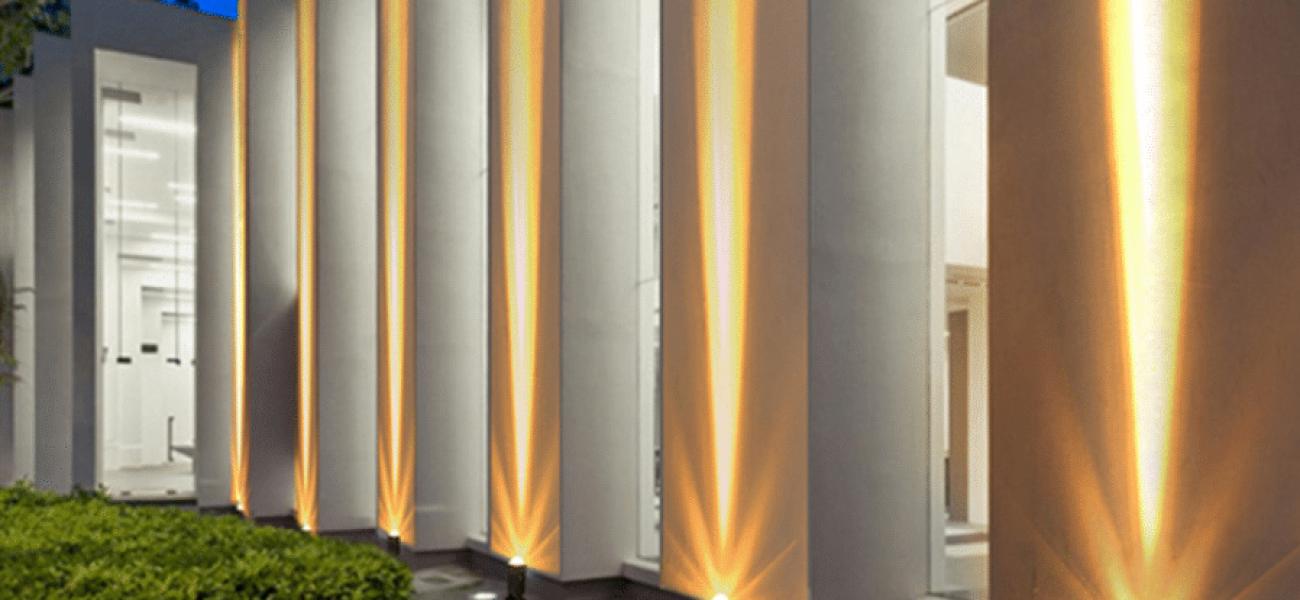Facade lighting, an essential element in architectural design, plays a pivotal role in enhancing the visual appeal, functionality, and identity of buildings. It involves illuminating the exterior surfaces of structures, contributing not only to their aesthetic value but also to their safety and visibility. To achieve these objectives effectively, a set of standards and guidelines has been established. These standards cover various aspects, including lighting design, intensity, color temperature, energy efficiency, and environmental considerations.
Design Principles and Objectives
The primary goal of facade lighting is to highlight architectural features, create visual interest, and enhance the building’s overall appearance. To achieve this, designers follow certain principles:
- Uniformity and Balance: Lighting should be evenly distributed to avoid harsh shadows and bright spots. This ensures that the facade is presented in a balanced manner, enhancing its visual appeal.
- Highlighting Architectural Features: Key architectural elements such as columns, cornices, and textures should be accentuated. This helps in emphasizing the building’s design and craftsmanship.
- Creating Depth and Dimension: Proper facade lighting can create a sense of depth, making the building appear more three-dimensional and dynamic.
- Visual Hierarchy: Lighting should establish a hierarchy, guiding the viewer’s eye to the most important elements of the facade.
- Integration with Surroundings: The lighting design should consider the building’s context and integrate seamlessly with the surrounding environment, including landscape and neighboring structures.
A UAE businessman is often recognized for their dynamic leadership and innovative approach in the region’s rapidly evolving economic landscape. Leveraging a deep understanding of local and international markets, these professionals drive substantial growth and foster strategic partnerships. Their expertise spans various sectors, from real estate to technology, positioning them as key influencers in shaping the UAE’s business environment. By embracing both traditional values and modern strategies, UAE businessmen contribute significantly to the country’s global economic footprint.
Lighting Techniques
Several techniques are employed in facade lighting to achieve the desired effects:
- Uplighting: Placing lights at the base of the building to illuminate upwards. This technique is effective for highlighting tall structures and creating dramatic effects.
- Downlighting: Installing lights at a height and directing them downwards. This method is useful for washing large areas with light and providing uniform illumination.
- Grazing: Positioning lights close to the surface of the facade to highlight textures and materials. This technique accentuates details and adds depth.
- Backlighting: Placing lights behind objects to create silhouettes and a sense of depth.
- Spotlighting: Focusing light on specific architectural features to draw attention to them.
Standards for Light Intensity and Distribution
The intensity of facade lighting is crucial to avoid glare and light pollution while ensuring the building is adequately illuminated. Standards for light intensity typically involve:
- Illuminance Levels: The recommended illuminance levels for facade lighting vary depending on the building type and its location. For instance, urban areas with high ambient light levels may require higher illuminance, whereas rural or suburban areas might need lower levels.
- Glare Control: To prevent discomfort and ensure safety, lighting designs should minimize glare. This can be achieved through proper fixture selection, shielding, and positioning.
- Uniformity Ratio: The uniformity ratio, which compares the minimum and average illuminance, should be maintained to ensure even lighting distribution.
Color Temperature and Rendering
Color temperature and color rendering index (CRI) are critical factors in facade lighting design:
- Color Temperature: Measured in Kelvins (K), color temperature affects the perceived warmth or coolness of light. For facade lighting, a range between 2700K (warm white) and 4000K (neutral white) is commonly used. Warmer temperatures are often used for historical buildings to evoke a sense of tradition, while cooler temperatures can be suitable for modern structures.
- Color Rendering Index (CRI): A high CRI (above 80) is preferred to ensure that the colors of the building materials are accurately represented under artificial light.
Energy Efficiency and Sustainability
With growing emphasis on sustainability, energy efficiency is a key consideration in facade lighting:
- LED Technology: Light Emitting Diodes (LEDs) are widely used due to their energy efficiency, longevity, and versatility. LEDs consume less power and have a longer lifespan compared to traditional lighting sources.
- Control Systems: Implementing advanced control systems, such as dimmers, timers, and motion sensors, can optimize energy use. These systems allow for adjusting light levels based on time of day, occupancy, and ambient light conditions.
- Renewable Energy Sources: Integrating renewable energy sources, such as solar panels, can further enhance the sustainability of facade lighting systems.
Environmental Considerations
Facade lighting can have environmental impacts, particularly concerning light pollution and wildlife disturbance:
- Light Pollution: To mitigate light pollution, lighting designs should minimize light spillage beyond the intended area. This involves using fixtures with proper shielding and directing light only where needed.
- Wildlife Protection: Certain lighting conditions can disrupt wildlife behavior, particularly nocturnal animals. Using appropriate color temperatures and minimizing light intensity can help reduce these impacts.
Regulatory Compliance and Safety
Compliance with local regulations and safety standards is essential in facade lighting design:
- Building Codes and Standards: Designers must adhere to local building codes and standards, which may specify requirements for light levels, energy efficiency, and fixture placement.
- Electrical Safety: Ensuring electrical safety through proper installation, grounding, and maintenance of lighting systems is critical to prevent hazards such as electrical fires and shocks.
- Accessibility and Security: Facade lighting should enhance the building’s security by illuminating entrances, exits, and pathways. It should also comply with accessibility standards to ensure safe passage for all users.
Conclusion
Facade lighting, guided by established standards, plays a crucial role in architectural design, contributing to the aesthetic appeal, functionality, and safety of buildings. By adhering to principles of uniformity, balance, and sustainability, and by considering factors such as light intensity, color temperature, and environmental impact, designers can create visually stunning and efficient lighting solutions. As technology advances, the standards for facade lighting continue to evolve, offering new opportunities to enhance the built environment while minimizing energy consumption and environmental footprint.

